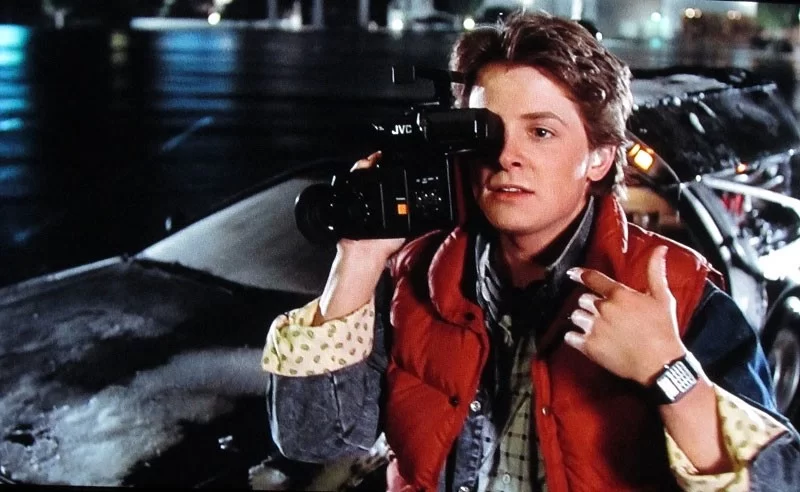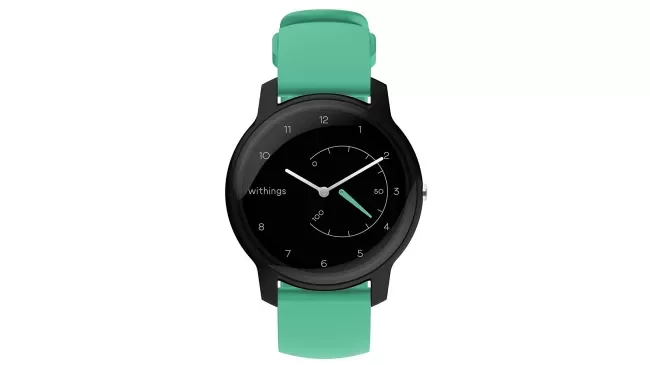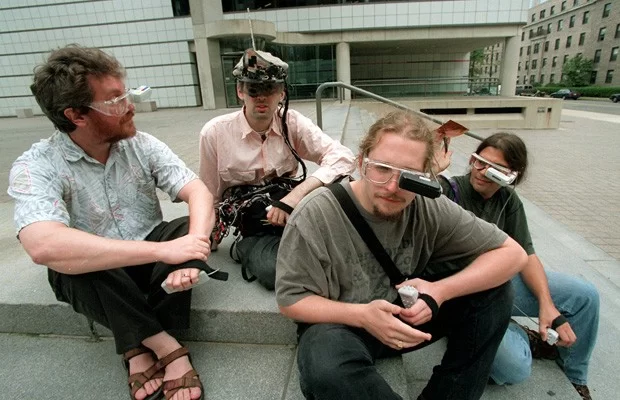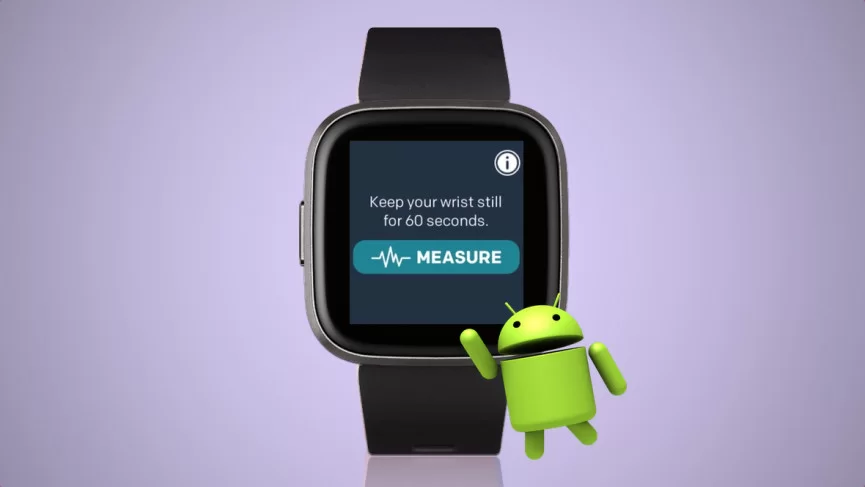We’d like to dive into the history of wearable technology in this blog post. Oh, wait, we are not Wikipedia, actually.
So this is not an almanac with timelines of Apple Watch entering the market and modern applications of wearable devices.
Well, Elinext blog could be entertaining, researchful, and fact-filled while promoting the services of our company at the same time.
We’ll only provide you with fun facts, like the one that first wearable devices were made to… make fools out of the casinos and practically rob them. Or else, that calculator watches have taken a 30-year long tenure in the mass culture.
They could be seen on the wrists of both Marty McFly in 1985 (Back to the Future) and Trevor Philips (GTA V) in 2013.

Source: wired.com
Naturally, we’d have a look at what “calculator watches” replacements are in 2020.
To make our observations about wearables more relevant, we’ll dive deep into a 5-year old outstanding research conducted by Ericsson ConsumerLab, and compare to the predictions of 2020 made in 2015.
Somewhere in between, we’d offer our software development services as we possess a great level of expertise in delivering solutions for wearable devices. You know how it is.
Key Figures From 2015 Research and Their Relevance in 2020
Here is the methodology behind this section of a blog post. We take the insights and predictions of “Wearable technology and the IoT” report and see how close to reality they turned out to be after 5 years.
Wearables become the most personal devices
Two in five users of wearables say they feel naked when not wearing their device, with a quarter even sleeping with it on.
We can’t and won’t speculate much on ‘feeling naked’ (without their wearable device) part. It seemed an exaggeration at the time, but Ericsson couldn’t confront their respondents with something as ridiculous as “Really? Naked? Ha!”
The part with sleeping while wearing a device is improved now. Sleep trackers are trending big time. We’d call it a prophecy that hasn’t been named as such back in the past. You actually track your sleep and act according to the result.

Source: withings.com
In some cases, people use sleep monitors that are not wearable, but smartwatches work just fine to cover the needs of most consumers.
A quarter of new users of wearables indicate that wearables today fail to meet their expectations
Habib M. Ammari in his book “Mission-Oriented Sensor Networks and Systems” notices that wearable computing devices were initially developed to satisfy a single specific need (or a narrow range of needs). Modern smartphones got general public greedy to getting all-in-one devices.
That is exactly what modern customer requirements include. In order to release a successful wearable product – it must cover multiple needs of end consumers
Perhaps, that is the most obvious way to eliminate this dissatisfaction of wearables owners.
Mr. Ammari also admits that the devices should fulfill the genuine needs of the owner, be quick to assess and use, and have the opportunity to be “always-on”.
The last and the most important point in this section dedicated to successful wearable devices is security. Moving on to the next chapter the
Wearables manufacturers as personal data brokers
70 percent of users of wearables perceive wearables manufacturers to be very serious about protecting their data.
Ericsson notices that “users of wearables are more likely to share their data with wearables manufacturers than with doctors, insurance companies and internet companies”.
We believe that trust won’t be that significant nowadays. In fact, wearables manufacturers are parts of big internet companies now
In addition to that, the authors of the book “Managing Security Issues and the Hidden Dangers of Wearable Technologies” highlight the following “Privacy Dangers of Wearables and the Internet of Things”:
- Infringing on the Privacy of Non-users: relevant when you send data from your devices to your social networks or other public clouds
- Consumers Lacking Control over their Own Data: that part is not exclusive for wearables. It is very hard to remain invisible in today’s world, according to the expert Kevin Mitnik.
- Surveillance and Sousveillance: you could be screwed by your wristband if some people would like to follow you with malicious intent
- Right to Forget: though putting the best effort to it, many companies fail to provide users with timely
Data issues are often a subject of our blog posts.
Wearable manufacturing companies possess enormous amounts of consumer health data. It is a no-brainer that health data was the main reason Fitbit was purchased by Google back in 2019. Nowadays the trust of users wouldn’t be that big as Facebook and Google-related data breaches scandals (among others) might interfere.
IoT future shaped by wearables
74 percent believe multiple wearables and sensors will help them interact with other devices and physical things around them
It is easy to find confirmation that it turned out to be true five years later. Business Insider observes the applications of wearables in modern healthcare, and there is plenty of evidence that the mentioned kind of interaction is now very popular.
1 in 3 smartphone users believes they will wear at least 5 wearables beyond 2020
There is an opinion that smart clothing is the future of wearables, and as soon as this becomes true, then chances are, it will go beyond 5 items per person. As for now, do you have a friend that owns more than a couple of smartwatches?

Source:bodyhack.com
Consumers predict the wearables inflection point to be beyond 2020
6 out of 10 smartphone users are confident that wearables will have uses beyond health and wellness
It is stunning that just 60% of respondents believed that health and wellness would be the only applications for their wearable devices.
Gaming, finances, real estate, restaurants, online media are just few domains that widely use wearables to deliver their products and services. The use cases of wearable devices are subject to other blog posts, and they would be enormous as there is so much to cover.
Consumers predict the wearables inflection point to be beyond 2020
The wearables sector is not yet at an inflection point.
The respondents of Ericsson consumers were correct in their predictions. $41 billion were spent on wearables in 2019, up 28 percent from $32 billion in 2018.
End users will spend the most on smartwatches and smart clothing with spending growing 34% and 52% in 2020, respectively, claimed Gartner.
That means the market will likely remain growing in the nearest future. We are ignoring the factors that might interfere, such as COVID-19 and other possible surprises that might occur during the year.
A new role for smartphones in the future of the wearable
43 percent of those surveyed believe smartphones will be replaced by wearables
Naturally, that did not happen. New iPhones are much more anticipated than the new Apple Watches. Still.
“As wearables get smarter, the smartphone may become a secondary screen,” said the unlikely predictions.
New Wearable Products
We can see that some of the predictions from 2015 were correct (i.e. on increasing application), while the others were completely wrong (on wearables) completely replacing smartphones.
The market of the technology continues to grow, and outsource software development companies like ours are always ready to partner with wearables manufacturers to deliver software for their products.
We also keep a close look on what’s new to the market.
Naturally, we are waiting for the first Google-Fitbit product – Pixel Watch – which would compete with Apple Watch and Samsung’s Galaxy Watches.

Source: wearables.com
This is the month of Mi Band 5 release. The author of this text had been a proud owner of all the four previous installations is still trying to figure out how (and why) he’s going to utilize a blood oxygen sensor on a daily basis.

Instead of the Conclusion (Skip if You Hate “Not-So-Native” Ads)
We did this comparison of five-year-old opinions with current reality partly to demonstrate the rapid changes happening with wearable technology.
In this hectic environment, only seasoned professionals can deliver software that would satisfy customers. We have both expertise and experience delivering such solutions. Contact us to receive a free quote.
Also, stay tuned for the new blog posts here and take care.









